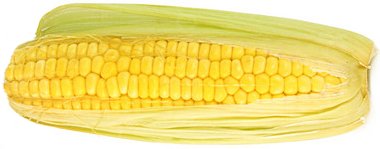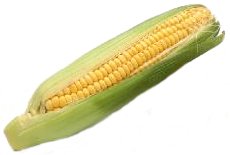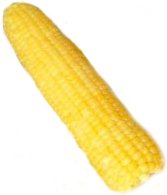

Sweet Corn (Zea)

(Name adopted from Greek zea, a kind of cereal.) Gramineae. Four species of annual, rarely perennial grasses. Female inflorescences axillary, raceme enveloped by spathes (often known as husks), occasionally tipped by a male raceme; internodes bearing a solitary sessile spikelet (ear), distichous, spikelets almost enclosed by internodes; callus truncate, flat; glumes equal, rounded or emarginate, lower glume crustaceous, smooth, lower flower sterile; style very long, silky; male inflorescence tassels, terminal racemes digitate to paniculate; spikelets paired, narrow, 2-flowered, one sessile, one stipitate, flowers male; glumes membraneous; lemmas translucent. C America. CultivationSweet corn has been the principal cereal in Mexico, Central America and many South American countries since pre-Colombian times. It is now the most important cereal grown in tropical and warm areas, for human and animal food, cooking oil, also made into beer and spirits. Its milled flour is made into dough; crushed grains are known as hominy grits. Forms with hard endosperm explode when heated to produce popcorn (variety praecox). There is archaeological evidence of the cultivation of primitive forms over 5000 years ago. The species no longer occurs in the wild but is widely cultivated throughout tropical and temperate regions of the world. The sugar content of the seed or kernels decreases as maturity approaches but the origin of sweetcorn as a distinct variety is probably a more recent development. Sweetcorn is a warm-season crop and will not withstand frost. Depending on the cultivar and growing conditions it requires from 70-110 frost-free days from planting to harvest. The optimum soil temperature for seed germination is between 21-27ºC with a minimum of 10ºC. Optimum mean air temperatures for growth lie within the range 21-30ºC although the crop can be grown at mean temperatures as low as 16ºC and as high as 35ºC. Flowering is influenced by day length and is promoted by short days, although cultivars have been selected for flowering over a wide range of latitudes covering both tropical an temperate situations. 
Sweetcorn is available fresh during the summer but the sugar level in the kernels begins to decline soon after the cobs have been harvested. They can, however, readily be frozen. Corn can be served on the cob after removing stem, leaves and remaining silk before boiling. Alternatively, the kernels can be removed from the cob using a sharp knife and served after light boiling. An alternative use of this vegetable is to harvest the newly formed cobs at a very early stage, when they can be trimmed, boiled and served entire as ‘baby sweet corn’. At this early stage the entire cob can be eaten. A sunny but well-sheltered site is required. Sweetcorn can be grown on a wide range of soil types but fertile medium-textured loams with a high organic content are preferable. The soil pH should be in the range 5.5-6.8. It takes up a large area but can be under cropped with lower-growing vegetables such as marrows, courgettes, French beans and most salad crops. Zea mays can be grown outdoors during late spring when the risk of frost has passed and soil temperatures exceed 10ºC. However, in most areas it is preferable to raise transplants in peat blocks or pots under gentle heat. In cool-temperate regions these should be hardened off before transplanting in the open; where possible continued protection from cloches until plants become too tall will ensure an earlier harvest. Clear plastic film can also be used for raising soil temperatures following direct sowings but must either be removed or slit at a later stage to permit development of the seedlings. Plants should be established in blocks with approximately 35cm between plants; this arrangement favours pollination whereby pollen from the tassels is transferred by wind and gravity to the silk of the female flowers lower in the leaf canopy. Plants of different cultivars should not be planted together as cross-pollination can affect flavour and sugar content. 
Plants should be earthed up slightly when about 30cm high to increase their stability. In more exposed situations it may even be advisable to support plants with individual canes. Watering should be carried out during dry weather, particularly during the flowering cob-filling stages. Each plant usually produces one or two pods which should be harvested by snapping from the stem at the time silks begin to die off and turn brown. At this time the kernels, which can be examined prior to harvesting by peeling open the protective layers, should contain a milky juice. The full sweetness and flavour is lost once the kernel starts to develop a more solid texture. The main pest is the fruit fly but slugs can also cause severe damage to young seedlings. The many agricultural pests are not usually a problem in the garden, except where plots are close to maize fields. Smut is the most likely to be seen, and in the US, Stewart’s wilt may occur after mild winters. Zea mays is also grown as an ornamental for foliage and for the cobs, which are used in dried arrangements, in subtropical bedding schemes; treat as a frost-tender annual in cool temperate zones and sow in late winter under glass, or, in regions with long, hot summers, in situ in early spring. Zea maysCORN; MEALIE; SWEET CORN. Annual, to 4m or more. Stems robust, upright, to 6cm diameter, rooting at basal nodes. Leaves 2-ranked, to 90 x 11cm lanceolate, acuminate, arching, somewhat undulate; ligule to 5mm, truncate; sheaths overlapping. Male inflorescence to 20 x 20cm, erect; spiklets to 1.5cm. Female inflorescence borne in leaf axils (cob), styles to 40cm; grain to 1cm, flattened, larger than glumes when mature. Summer-autumn. Cultigen, first cultivated in Mexico. All modern cultivars of sweetcorn are hybrids. Recent developments include increases in sugar levels to produce what have been referred to as ‘supersweets’ although these suffer from reduced vigour and require warmer growing conditions. Early maturing cultivars include ‘Aztec’, ‘Butter Imp’ (small cobs), ‘Earlibelle’, ‘Earliking’, ‘Jubilee’, ‘Kelvedon Glory’, ‘Stardust’, ‘Platinum Lady’, ‘White Sunglow’, and supersweets ‘Candle’, ‘early Extra Sweet’, ‘Sweet Desire’ and ‘Sweet Nugget’. Midseason cultivars include ‘Flavour King’, ‘Merton’ (very large cobs), ‘Reward’, ‘Silver Queen’ (white cobs), and ‘Sundance’, with supersweets ‘Illini Extra Sweet’, ‘Reward’, ‘Sundance’, ‘Sweet Dreams’ and ‘Sweet 77’ (very large cob). Ornamental cultivars include the following ‘Cutie Blues’: grains small, dark blue. ‘Fiesta’: grains long, coloured white, yellow, red, blue and purple in patches. ‘Harlequin’: leaves striped green, red, grains deep red. ‘Indian Corn’: grains contain multicoloured. ‘Strawberry Corn’: grains small, burgundy; husks yellow. ‘Quadricolor’; leaves striped green, white, yellow, pink. ‘Variegata’: leaves longitudinally striped pale yellow, pink. ‘Variegata’: leaves striped white. variety gracillima Dwarf form; leaves narrow. variety japonica. To 120cm. Leaves striped white. Z7.
|
Home
Grow Nuts
Grow Herbs
Grow Fruit
Cyberian Index
If you like this website and want one of your own contact
Cyberian All information correct at
time of publication and open to updates as necessary. No part of this website,
or its vectors, may be produced in any shape or form, using any type or design
of medium, system, equipment or otherwise without the prior written consensual
notice of the Cyberian. Any breach of these requirements will result in the
appropriate action. If in doubt, e-mail contact is recommended.
Some components of this website were obtained as open-source software and are
used in the same non-profit manner on this website.